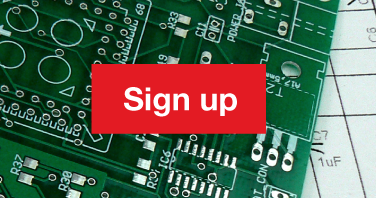By Jeremy Cook
In 2020, Apple made the leap from Intel processors to its own custom silicon chips, the M1 series. It was a dramatic but not entirely unexpected move from a company known for controlling its products' hardware and software (and that had already implemented its own silicon designs on mobile iOS devices).
Apple’s move appears to have been a great success. As of early 2024, the company has progressed to its third-generation line of M3 chips.
Perhaps inspired by Apple’s success, more companies are jumping into the custom silicon fray, including competitors Google and Microsoft and other tech heavy hitters like Amazon, Tesla, and NVIDIA. Chips are no longer simply the realm of Intel, AMD, and Qualcomm. Now, they may be end-user-specific (e.g., AWS custom silicon, Google custom silicon, Apple custom silicon, and the like).
Apple custom chips lead the way
Apple has long employed its own A-series chips on iPhone and iPad devices, such as the A17 Pro chip used on the iPhone 15 Pro. These chips feature an ARM architecture with both CPU and GPU elements that can accommodate processing nodes like AI accelerators. This integrated, custom architecture allows for optimization and savings on space and assembly costs. Since the chip (i.e., system-on-chip, or SoC) is designed to meet Apple’s specific requirements, functionality that doesn’t contribute to these requirements can be stripped.
Apple achieved processing and power-efficiency improvements, an experience they’ve parlayed into their M1 through M3 laptops and desktop chips. Similar benefits should be possible for others in the now-burgeoning custom silicon space.
Of course, one huge downside to designing your own custom silicon chips is that you’re fully responsible for the final design. In-house expertise must be sufficient to meet design needs, and if a company isn’t as competent as it believes itself to be, this can be hugely problematic. Nonetheless, with Apple’s success, other companies are transitioning to custom silicon.
Custom silicon chips’ widespread implementation
Microsoft announced on November 15, 2023, that it was developing two custom chips designed to help with its in-house AI workload: the Azure Maia 100 AI Accelerator and the Azure Cobalt 100 CPU2. Microsoft appears happy with the early results from these chips. According to Microsoft corporate VP of hardware product development Wes McCullough, “We’re making the most efficient use of the transistors on the silicon. Multiply those efficiency gains in servers across all our data centers, it adds up to a pretty big number."
In the mobile arena, Google—which previously relied upon Qualcomm chips for its flagship Pixel phones—now uses its own silicon. The first of these Google custom silicon chips was 2021’s Pixel 6 line with the Tensor processor. As with notebook and data center chips, their goal is to bring more computing resources to bear at a lower cost in terms of power consumption, while opening up new capabilities. It appears Google is happy with its custom silicon performance so far. In 2023, Google announced its third-generation chip, the Tensor G3. The G3 can run over twice the machine learning models on-device as the first-generation Tensor chip, and the models themselves have become more sophisticated.
In both Google and Microsoft’s cases, the story is a bit different than Apple’s proprietary approach. The two Microsoft devices (Maia/Cobalt) are meant entirely for in-house use. On the other hand, Google uses custom chips to set apart its Pixel line of smartphones but still very much supports non-Google silicon through its manufacturer-agnostic Android operating system.
One might posit that the methodologies of Microsoft and Google will mean less prominent ecosystem-wide gains than Apple’s approach. However, if history is any guide, Android/Microsoft will likely provide more flexibility for the end-user. There are tradeoffs either way.

Custom ASIC: allowing GPU-like performance on the edge?
Up to now, custom silicon has offered an incremental improvement over the non-custom silicon equivalent. There are genuine benefits, but an Intel or Qualcomm mobile processor is nominally capable of doing the same job as an Apple Ax or Google Tensor chip, even if it’s not perfectly optimized for the task. In many robotics and edge AI applications, it’s impractical to implement a standard CPU/GPU processing setup from a power, space, and/or price standpoint. An alternative could be to use an application-specific integrated circuit, or ASIC.
As the name implies, these chips are designed for a specific purpose, such as image processing or inference. Contrast that with custom SoCs like the Google Tensor, which are designed to work with specific types of hardware and processing tasks but are suitable for many individual applications. The ultra-focused ASIC paradigm means that even greater performance and power efficiency gains can be realized, at the cost of a limited processing scope.
Therefore, an ASIC chip should be able to do one specific job at a lower monetary and power cost than a more general-purpose processor. An ASIC chip enables machine learning and other expensive (in terms of monetary, power, and/or physical space) functionality in situations where it would otherwise be impractical. ASIC chip will not always be the proper solution, but it’s a possibility to consider.
Custom silicon: here to stay
While predicting computing’s long-term future is generally a fool’s errand, the trend toward custom silicon appears here to stay in the coming decade. The combination of performance gains with power efficiency is a huge win, and we will likely see more companies adopt this approach as end-users (e.g., Apple, Google), along with an expansion in the design space (e.g., eInfochips specializing in custom chips) to meet these new silicon needs.
The fabricators that physically make these chips must continue adapting, and with more functionality integrated into one chip, boards should become less complicated, less expensive, and more robust.


